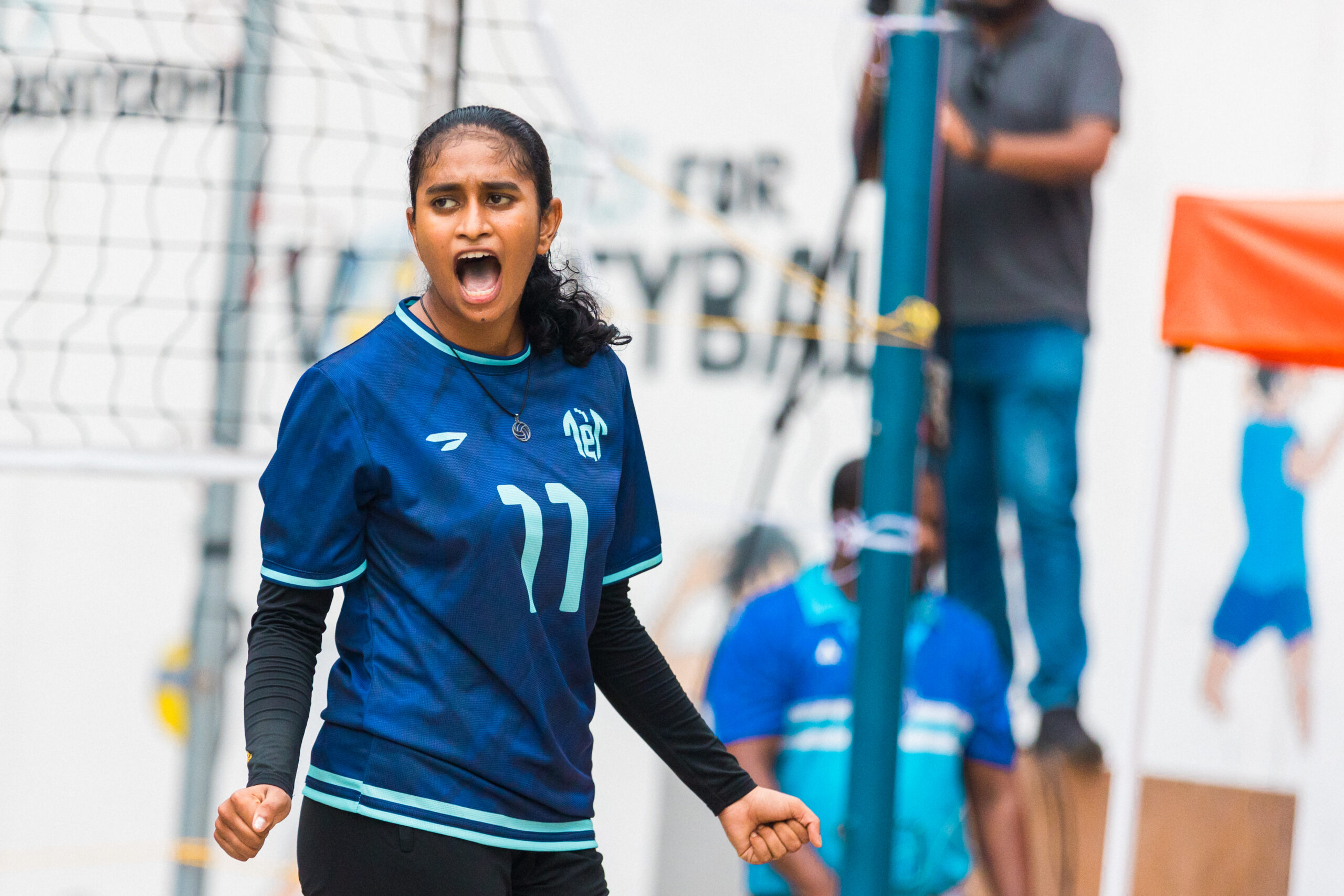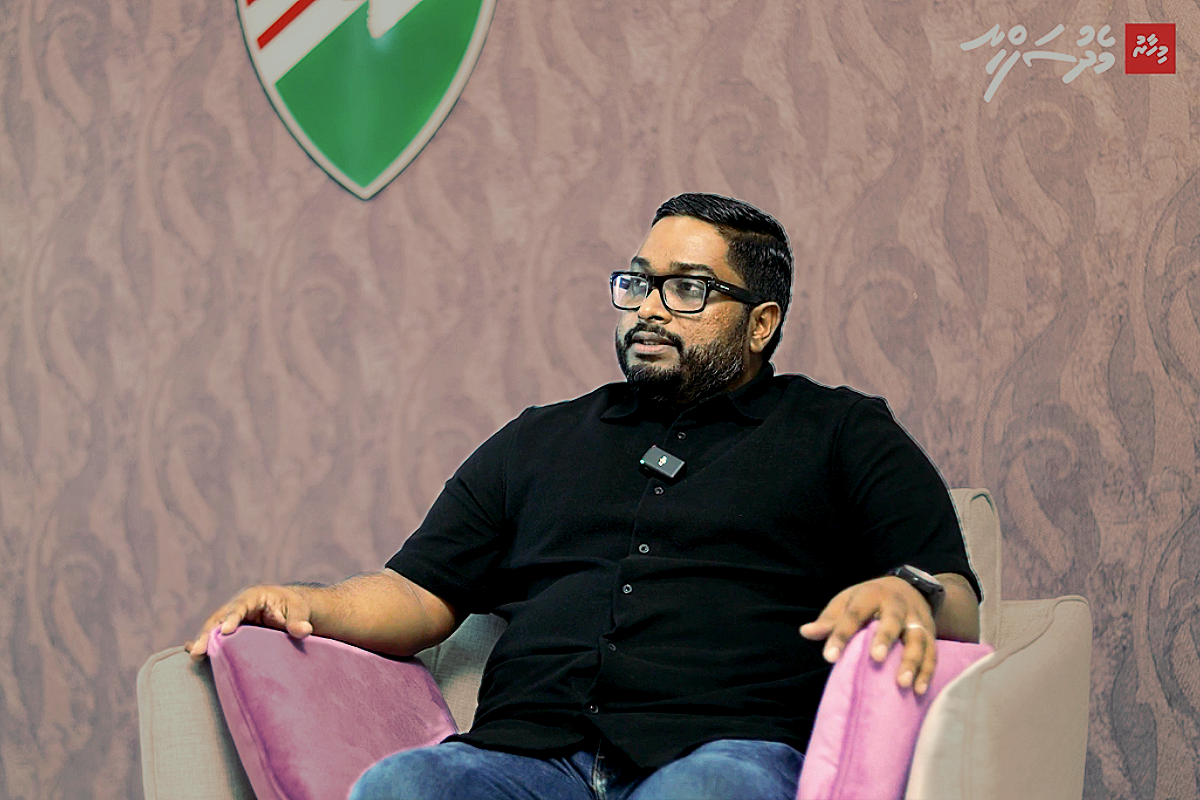In late 2019, the Football Association of Maldives unveiled what it described as the most significant venture in the country’s footballing history: a full-fledged football school in Hulhumalé, complete with residential blocks, training pitches, and academic facilities.
In part one of the series, we delved into how Bassam himself explained FAM’s biggest challenges, like sponsorship cutoffs and difficulties in club management, in a 2023 interview with Mihaaru.
Alongside these operational issues, Bassam’s administration is notorious for having launched ambitious infrastructural projects, all aimed at taking Maldivian football “towards the future”.
By October 2021, FAM had promoted the football school project as the largest initiative of its kind in the Maldives, announcing a partnership with Michel Salgado. It promised to develop eighteen football schools across the country and train kids from ages seven to twelve. Eighteen!
The football school and stadium redevelopment were supposed to be projects that would take Maldivian football “towards the future”. However, despite all the hype and sloganeering, these projects eventually exposed the FA’s problems with long-term planning, financing, and follow-through.
Five years on, the story of the grand football school in Hulhumale’ is one of unfulfilled promise. The land allocated for the academy now sits empty, repossessed by the state after FAM failed to pay rent for several consecutive years.
Under the former administration, large portions of the land had been leased out to private businesses, some on contracts up to four decades. Those decisions have plunged FAM further into debt, as compensation claims and lawsuits from affected partners continue to mount.
Among these was a deal with Apollo Holdings, revealed during a court case in late 2022, where FAM handed over 5,000 square feet of the academy plot in exchange for an MVR 13 million debt settlement. The arrangement came after Apollo sued FAM for failing to honour previous settlement terms. In court, the company claimed additional payments were still owed for work completed on the site.
Although the two sides later reached an out-of-court settlement, the case exposed how FAM had begun slicing away parts of the training ground to resolve unrelated financial obligations. It raised questions about how the land, originally allocated for the good of football, had become a bargaining chip for settling FAM’s dues.
Launched in 2018 as a presidential pledge under former President Abdulla Yameen, the football school was a joint effort between the President’s Office, the Ministry of Sports, and FAM. It was not financed through the national budget, but instead drawn from the contingency reserve in a way that the recent report by the Auditor General now says violated public finance regulations.
The Auditor General’s report reveals how rules were bypassed, contracts were split, and payments amounting to MVR 20.4 million were made without proper authorization. In one instance, FAM awarded a separate MVR 9.9 million contract for tasks already covered under the main agreement. Over MVR 17 million was paid without verifying the completion of work. Penalty clauses for delays were omitted altogether, even as the project, meant to be finished in 90 days, remained incomplete years later.
By the time HDC repossessed the land in 2024, 84 percent of the contract’s total value had already been paid.
Under Bassam’s administration, the FAM had also announced a project to build an arena at Maafannu Stadium, which includes a rehabilitation centre, FAM office space and a turf field. Under a reported USD 17 million agreement with a foreign contractor, the plan was to build a four-storey indoor arena and a 20-storey office tower. The contractor, Sky Wind Global, happens to be linked to the K-Park Group, a company responsible for multiple stalled projects in the capital.
Despite vacating the premises, FAM never broke ground on the site. Rent payments for their temporary office went unpaid, and the stadium area was left dormant. Over time, the same development web led to a court ruling that ordered FAM to pay more than MVR 52 million to another construction firm for separate, unrealised works in Hulhumalé.
This deal, like the academy, faded into the background. But years later, during the Bassam’s CAS case, the FIFA legal team has revealed that one million of the USD 1.48 million granted to FAM under the FIFA Forward Program remains missing. This money was supposed to go into the Maafannu arena project.
In the interview with Mihaaru in November 2023, Bassam was (apparently) asked why the FAM’s properties are reportedly being used as warehouses, he replied: “Now when you say it like that, when you say these used to be office buildings and now they are warehouses, it is misleading. We planned for it to generate revenue from the time we drew the concept”.
Bassam was also asked about the big projects of Hulhumale’ Football School and the agreements with Michael Salgado. He replied: “The project is halted. Because we don’t want it to resume until the construction of the Hulhumale’ (football) School.” Bassam said that FAM’s aim was to bring a selected pool of kids from the Atolls and let them settle inside the school. “For the project (with Salgado) we had trained a group of coaches from the atolls, but then put it on pause because the construction was being delayed.”
When asked about the investment, he said, “From what I remember, the contract we made with Salgado is one worth 400 thousand dollars.” The Hulhumale’ football school, according to Bassam, was designed to accommodate 100 young footballers at any given time. As this project grows, Bassam said the FAM was planning to expand the accommodation blocks, constructing more buildings inside the lot.
He said preparations had been made, and went on to insist that the media had distorted the story. He did not address the leasing of academy land, nor did he speak to the cost of withdrawing from long-term agreements.
Besides the pledges of football school and the constructions at Maafannu stadium, Bassam’s administration made other infrastructural promises, some of which was delivered.

These initiatives began with strong public messaging. Renderings were released, slogans shared, and partnerships announced. But with the exception of a handful of projects, much of Bassam’s grand visions and ideas remained just that – ideas.
It is not uncommon for federations to dream big. What matters, ultimately, is whether our footballers can live out those dreams. In the case of FAM’s major projects under Bassam’s leadership, the gap between vision and execution proved too wide.
The results were not seen in academies and accommodation blocks, but in reclaimed lands, court cases, suspended FIFA fundings and ghost projects that will continue to haunt the football community for years to come.


 Ali Thameem
Ali Thameem









